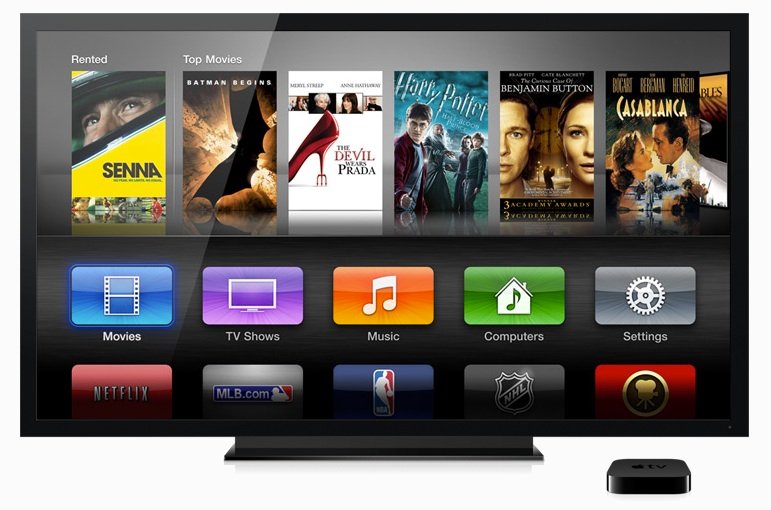The Long Game: Apple’s Strategy to Dominate Your Living Room and Beyond
In the fiercely competitive landscape of digital streaming, Apple has consistently played a different game. While rivals like Netflix and Disney+ engage in a high-volume arms race for content, Apple TV+ has cultivated a more deliberate, curated approach. Recent strategic moves, particularly the securing of long-term exclusive rights for iconic, family-friendly properties, signal a significant doubling-down on this “quality over quantity” philosophy. This isn’t merely about adding another show to a catalog; it’s a calculated, multi-billion dollar investment in cultural permanence and a powerful lever to deepen user integration into its sprawling hardware and software ecosystem. This strategy transcends simple streaming—it’s a core component of the latest Apple ecosystem news, designed to make every iPhone, iPad, and future device an indispensable portal to Apple’s world.
This article provides a comprehensive technical analysis of Apple’s evolving content strategy, using recent exclusivity deals as a case study. We will explore how these decisions are engineered to bolster the entire Apple product line, from the latest iPhone news to the forward-looking Apple Vision Pro news. We’ll break down the technical and marketing implications, examine the long-term vision, and provide actionable insights for consumers and industry observers navigating this meticulously constructed digital kingdom.
Section 1: The Blueprint for a Curated Kingdom
Apple’s approach to content is fundamentally different from its competitors. It’s not about having everything; it’s about having the *right* things—content that aligns with its brand identity of premium quality, innovation, and family-safe entertainment. Securing long-term, exclusive deals for beloved, multi-generational franchises is a cornerstone of this blueprint.
The Power of Nostalgia and Cultural Permanence
By locking down universally cherished content for the better part of a decade, Apple is doing more than just licensing a few holiday specials. It is purchasing a cultural touchstone. For millions of families, certain animated classics are annual traditions. By making Apple TV+ the sole destination for these traditions, Apple embeds its service into the very fabric of its subscribers’ lives. This strategy has several key advantages:
- Subscriber Retention: Seasonal, “can’t-miss” events create a powerful incentive for users to remain subscribed year-round. It transforms the service from a monthly consideration into an annual necessity.
- Brand Association: Apple becomes associated with the wholesome, positive, and timeless values embodied by these properties. This is invaluable from a marketing perspective, aligning perfectly with the latest Apple TV marketing news.
- Demographic Reach: Such content appeals to the widest possible audience—from young children to grandparents who grew up with the original broadcasts. This broadens the appeal of the Apple ecosystem far beyond its traditional tech-savvy base.
Content as an Ecosystem Catalyst
Crucially, Apple TV+ does not exist in a vacuum. Every piece of content is a gateway to the broader Apple ecosystem. A family that subscribes to watch a special is likely doing so on an Apple device—an iPad, an iPhone, or an Apple TV 4K. The viewing experience is enhanced by other Apple products; the sound is richer through a HomePod mini or a pair of AirPods Pro, creating a seamless, high-quality experience that “just works.”
This integration is a deliberate business strategy. The relatively low monthly cost of Apple TV+ is a loss leader designed to sell and retain customers for high-margin hardware. The latest iOS updates news often includes features that tighten this integration, such as improved SharePlay functionality or deeper Siri integration for content discovery. This flywheel effect—where services drive hardware sales and hardware enhances the service experience—is the engine of Apple’s growth and a key differentiator in the market.
Section 2: A Technical Breakdown of the Walled Garden Strategy
Apple’s “walled garden” is a well-known concept, and Apple TV+ is its latest and most culturally significant extension. The strategy is built on a foundation of vertical integration, where Apple controls the hardware, the operating system, the distribution platform, and now, increasingly, the content itself. This provides a level of control and user experience optimization that is difficult for competitors to replicate.
Optimizing for the Apple Universe
When Apple produces original content, it’s engineered from the ground up to look and sound its best on Apple devices. This includes:
- Dolby Vision and Atmos as Standard: Apple has been a major proponent of high-dynamic-range (HDR) video and immersive audio. Its original productions are mastered to these high standards, ensuring a premium experience on compatible devices, from the latest iPhone to the Apple TV 4K connected to a high-end home theater. This focus on quality trickles down to all Apple accessories news, as products like the AirPods Max are designed with Spatial Audio to take full advantage of this content.
- Seamless Cross-Device Syncing: The “Up Next” queue and viewing history are synchronized via iCloud across every device. A user can start a show on their iPad during their commute, pause, and then ask Siri on their HomePod to resume it on their living room TV when they get home. This seamlessness is a core tenet of the ecosystem and a major selling point.
- Privacy and Security: In an era of data-hungry streaming services, Apple’s staunch stance on user privacy is a key differentiator. The latest Apple privacy news consistently highlights how user data is protected. Because Apple’s business model is primarily driven by hardware sales, it has less incentive to monetize viewing habits in the same way as its ad-supported or data-focused rivals. This commitment is baked into the operating system, a topic frequently covered in iOS security news.
The Future of Consumption: Vision Pro and Immersive Content
The long-term nature of these content deals hints at a future beyond the flat screen. With the advent of the Apple Vision Pro, the world of “spatial computing” is upon us. Imagine watching a classic Peanuts special not on a TV, but in an immersive environment where the characters seem to be in the room with you. This is the frontier that Apple is preparing for. Securing timeless content now ensures a pipeline of beloved IP that can be re-imagined for future platforms.
We are already seeing early glimpses of this with immersive video formats. The latest Apple Vision Pro news points to a future where entertainment is a fully interactive experience. One can even speculate about future accessories, like a Vision Pro wand for interacting with content or creating an iPad vision board news-worthy augmented reality experience. This forward-thinking approach ensures that Apple’s content library will remain relevant and valuable as technology evolves, tying into the broader narrative of Apple AR news.
Section 3: Industry Implications and the Consumer Dilemma
Apple’s strategy of creating exclusive, high-walled content gardens has profound implications for both the entertainment industry and consumers. It represents a fundamental shift away from the era of broadcast television, where certain cultural events were available to anyone with an antenna.
The End of Broadcast Tradition?
For decades, watching holiday specials on broadcast networks was a shared national experience. By making these specials exclusive to its paid platform, Apple is effectively privatizing a piece of shared culture. This has, understandably, caused some backlash. The pitfall here is the risk of alienating a segment of the audience that is unwilling or unable to subscribe. However, Apple is betting that the allure of the content is strong enough to convert viewers into paying customers. This is a high-stakes gamble on the power of nostalgia.

This trend also forces other media companies to re-evaluate their own strategies. Do they continue licensing their legacy content to the highest bidder, or do they pull it back to bolster their own streaming services? This fragmentation of the content landscape is a direct consequence of the streaming wars, and Apple’s aggressive, long-term exclusivity plays are accelerating the trend. Even the sentimentality around old tech, as seen in hobbyist circles discussing iPod revival news or the iconic design of the iPod Classic, is a market force Apple understands well—nostalgia sells.
Real-World Application: The Family Subscription Decision
Consider a family of four deciding on their streaming budget. They may already subscribe to Netflix for its vast library and Disney+ for its Marvel and Star Wars content. The decision to add Apple TV+ often hinges on a “killer app” or a “must-see” event. For many, exclusive access to beloved family specials becomes that tipping point. Once subscribed, they are exposed to Apple’s broader catalog of acclaimed original series like *Ted Lasso* and *Severance*. They may also explore bundled services like Apple Arcade and Apple Fitness+, the latter of which ties directly into Apple health news and data from the Apple Watch. This is how a single content deal can lead to a household becoming deeply embedded in the entire Apple services ecosystem.
Section 4: Recommendations and Strategic Considerations
For consumers, the value proposition of Apple TV+ is becoming increasingly complex and compelling. It’s no longer just about the content on the screen; it’s about the total experience and its integration with the devices you use every day.
Pros of Apple’s Strategy for Consumers:

- Unmatched Quality: A consistent baseline of technical excellence (4K, Dolby Vision, Atmos) across its original content.
- Curated Library: Less time scrolling through mediocre content. The library is smaller but has a higher hit rate of critically acclaimed shows.
- Ad-Free Experience: A clean, uninterrupted viewing experience is a core part of the premium offering.
- Ecosystem Synergy: For users already invested in Apple hardware, the seamless integration is a significant and tangible benefit. From using an Apple Pencil on an iPad to design something inspired by a show, to tracking workouts with an Apple Watch, the synergy is powerful.
Cons and Potential Pitfalls:
- The “Walled Garden” Barrier: Exclusivity means that if you want to watch specific content, you have no choice but to subscribe. This limits consumer choice and can be frustrating.
- Smaller Catalog: For users who prioritize a vast quantity of content to browse, the library can feel limited compared to competitors.
- Hardware Dependency: While available on other platforms, the service is undeniably best on Apple hardware, which carries a premium price tag. The experience on a third-party smart TV or streaming stick is good, but not as deeply integrated as it is with an Apple TV box.
Best Practices for Consumers
To maximize value, consumers should consider the Apple One bundle, which packages Apple TV+ with Music, Arcade, and iCloud+ storage at a discounted rate. Furthermore, taking advantage of extended free trials that often come with the purchase of new hardware (like an iPhone, iPad, or Mac) is a great way to explore the service. It’s also worth noting how other product lines, even seemingly disconnected ones like the classic iPod Shuffle or iPod Mini, represent an era of Apple’s design philosophy that still informs its current user-centric approach to services.
Conclusion: Building a Moat for the Next Decade
Apple’s long-term exclusive content deals are far more than simple programming decisions. They are strategic investments designed to build a deep, defensible moat around its entire ecosystem. By securing timeless, family-oriented content, Apple is not just acquiring viewers; it’s acquiring traditions, embedding its service into the cultural and emotional lives of its users. This strategy ensures that Apple TV+ is not just another app on a screen but an integral part of the Apple experience, driving hardware sales and fostering loyalty for years to come.
While the approach may frustrate those left outside the walled garden, its effectiveness as a business strategy is undeniable. As we move into an era of spatial computing and even more deeply integrated technology, the content Apple secures today will become the foundation for the entertainment experiences of tomorrow. The latest Apple TV news is, in reality, news about the future of the entire company—a future that is curated, premium, and exclusively Apple.











